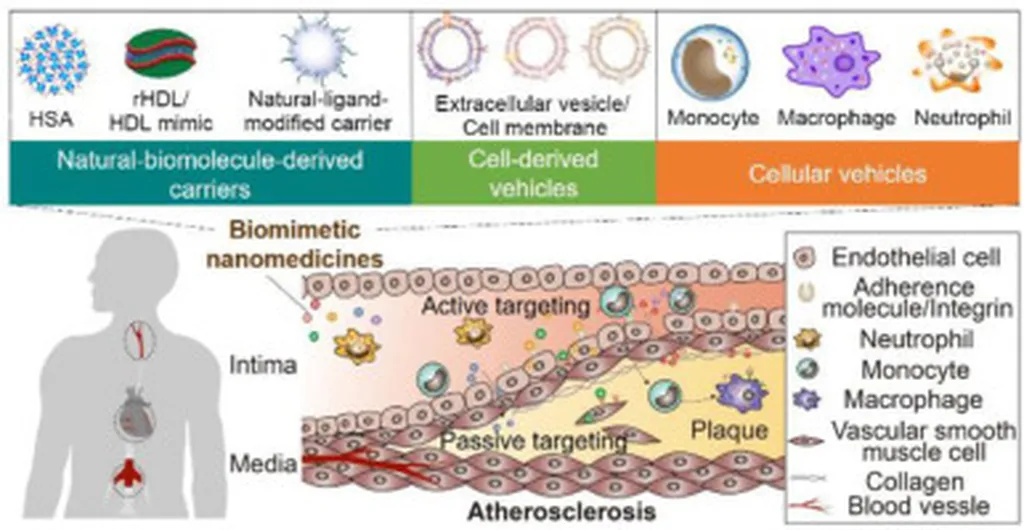In a groundbreaking development that could reshape the landscape of cardiovascular disease treatment, researchers have unveiled a novel approach to combat atherosclerosis, the leading cause of heart attacks and strokes. The study, led by Shiteng Cai from the Department of Cardiology at Zhongshan Hospital, Fudan University, introduces a macrophage biomimetic nanoparticle that not only enhances the clearance of dying cells but also promotes cholesterol efflux, offering a dual-pronged attack on the disease.
Atherosclerosis is characterized by the buildup of cholesterol-laden plaques in the arteries, a process driven by chronic inflammation and the failure of macrophages to clear apoptotic cells effectively. Previous strategies targeting the CD47-SIRPα axis have shown promise in promoting efferocytosis, the process by which macrophages engulf and digest dying cells. However, the overwhelming lipid burden on macrophages has limited the efficacy of these treatments.
Cai and his team have developed a retinoic acid-loaded macrophage membrane-biomimetic liposome (R@MLP) that addresses this challenge. “Our approach synergizes checkpoint inhibition and cholesterol efflux to boost pro-efferocytosis therapy,” Cai explained. The R@MLP leverages the innate presence of SIRPα on the macrophage membrane to block the CD47-SIRPα interaction, facilitating the engulfment of apoptotic cells. Simultaneously, the retinoic acid within the R@MLP upregulates the expression of ABCA1 and ABCG1 in macrophages, enhancing cholesterol efflux and reducing the lipid burden.
In a mouse model of atherosclerosis, the R@MLP demonstrated remarkable targeting ability to inflammatory plaques and significantly reinforced the efferocytosis capacity of macrophages. This dual action shifted macrophages to an anti-inflammatory state, ultimately attenuating the progression of atherosclerosis. “This presents a novel anti-inflammatory therapeutic strategy for atherosclerosis management,” Cai noted, highlighting the potential of this innovative approach.
The implications of this research extend beyond the realm of cardiovascular medicine. The development of biomimetic nanoparticles that can target inflammation and promote cholesterol efflux could have significant commercial impacts, particularly in the energy sector. As the global population ages, the demand for effective treatments for age-related diseases, including atherosclerosis, is set to rise. This technology could pave the way for new therapeutic strategies that not only improve patient outcomes but also reduce the economic burden of these diseases.
Published in the journal *Bioactive Materials* (translated to English as *生物活性材料*), this study opens new avenues for the development of advanced therapies that harness the body’s natural processes to combat disease. As researchers continue to explore the potential of biomimetic nanoparticles, the future of cardiovascular medicine looks increasingly promising. This research not only advances our understanding of atherosclerosis but also sets the stage for innovative treatments that could revolutionize the field.

